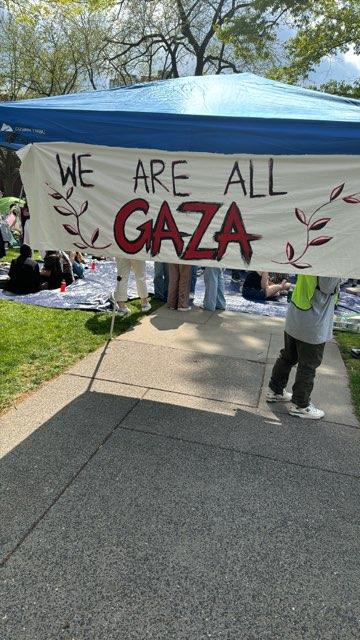Our last installment highlighted several fundamental issues with IBD’s Psak 1051, including issues related to yichud eidim, as well as the IBD’s fundamental ignorance of how senifim in teshuvot are meant to function. We will now continue our analysis of the fundamental issues, and then turn our attention to technical errors, as well as what these errors tell us about the IBD’s general attitude towards psak halacha and heter agunot.
5 – The final paragraph of the “Discussion” section is incoherent. We are told regarding the potential male witness under the chupah that “even if he was Torah-observant, in accordance with Ritva and others his testimony is invalid. Nonetheless, the mesader kiddushin may serve as one witness and in pursuance to Rema’s view, we must be concerned that one can consummate kiddushin with the presence of one witness.” How are we to understand that the other male under the chupah is invalid due to Ritva’s position, but nonetheless the mesader kiddushin can serve as one witness? In truth, the entirety of Psak 105 suffers from a disjointed and garbled train of thought. Any reader who possesses basic familiarity with teshuva literature will immediately recognize the pronounced absence of clarity that characterizes Psak 105.
6 – The IBD’s final reason for leniency, the husband’s claim that he is not Jewish, at first glance appears to be a strong reason, and is in fact independent of the other reasons. However, one then wonders why this was not the main basis for the lenient ruling, rather than the reliance on Ritva’s position. If this claim could be substantiated, it presumably ought to be the main basis for the ruling. If it is unsubstantiated, then it ought not to be included at all, even as a senif. Unfortunately, we are not told whether the IBD found any basis for this claim, or even whether they attempted to investigate this claim at all. Information about the husband’s parents, family, upbringing, or whether the mesader kiddushin had anything to say on the matter, is all conspicuously absent from Psak 105. Nor is there any halachic analysis presented regarding the ne’emanut of the husband’s claim, or whether such a claim might run counter to an established chazaka. One might get the impression that the IBD did not bother investigating, because they would anyway nullify the kiddushin on the basis of the Ritva, and could throw this in as a senif. This could be the most important piece of information that could free this agunah. That there is no further elaboration on this issue, and that the IBD sufficed with a lone sentence regarding the husband’s status, is nothing short of stunning.
7 – It is worthwhile to note that Rav Waldenberg and Rav Boyaron, upon whom the IBD explicitly place great reliance, both stipulated that their teshuvot of heter agunah require the approval of other rabbis of great stature. Of the three teshuvot of Rav Boyaron upon which the IBD relies, only the latter two deal with heter agunah. In one of these teshuvot, Rav Boyaron stipulates that his teshuva requires the approval of the “Gadol Ha-dor Rav Ovadya.” He subsequently received the approval of both Rav Ovadya Yosef and the then Rishon Le-tzion Rav Shlomo Amar, and their approvals are printed in Rav Boyaron’s teshuva. In the last teshuva, he stipulates that his teshuva requires the approval of three “morei hora’a,” as well as that of the Rishon Le-tzion, and that he would prefer to have Rav Ovadya Yosef’s approval as well. Similarly, in the teshuva of Rav Waldenberg upon which the IBD places so much reliance, Rav Waldenberg stipulates that his heter requires the approval of two other “gedolei hora’a.”
Given the IBD’s great reliance on the aforementioned teshuvot, it is surprising, to say the least, that the IBD makes no such stipulations in Psak 105. One of the IBD dayanim, Rabbi Warburg, has written an article elsewhere that seems to say that the IBD feels it to be their responsibility to annul marriages even without the approval of great halachic authorities.2 It should go without saying, though, that such responsibility falls only on those who are capable of shouldering it. Even dayanim on the highest court in Israel maintained the humility to submit their psakim to their colleagues and superiors for approval. The IBD’s independence is not only bold, but contrary to the precedents set by the dayanim who they claim to follow.
II Technical Errors
Psak 105 is riddled with errors in spelling, punctuation, transliteration and basic Talmudic Aramaic, as listed in the Appendix to this review, available on torahmusings.com.3 Even well-crafted and professionally edited books contain typos. However, we find in this ruling an abundance of basic mistakes. Lest any reader conclude that I engaged in some sort of treasure hunt in search of these errors, let me assure you that I didn’t need to look very hard. Both the Hebrew and English versions of Psak 105 are each less than three pages in length. To err is human, but each version of Psak 105 contains such a high concentration of errors that it is jarring to read them. An attuned reader cannot even read through the first two lines of either version without encountering a blatant error.
Read the psak yourself4, and scan the Appendix to this review, available on torahmusings.com. The carelessness and sloppiness which characterize Psak 105 reflect an overly casual and decidedly non-serious and unprofessional attitude toward the weighty issue of heter agunot. One wonders if any of the dayanim would take such a lackadaisical attitude toward publishing a book, a doctoral dissertation, a college term paper, or even a high school term paper. It is disturbing, to say the least, that the IBD dayanim would treat a psak of heter agunah with less seriousness and attention than a high school term paper would deserve. Such a significant collection of errors bespeaks a lack of respect for the readers, a lack of respect for the complex issue of heter agunot, and indeed, a lack of respect for the agunah herself to whom this psak relates. One cannot help but wonder if any of the dayanim bothered to proofread, or even read these texts before they were placed on the IBD website as a representative example of their work. Even if one dayan alone authored Psak 105, it would be the height of professional irresponsibility for the other dayanim to sign their names to a psak that they have not even read themselves. This gives rise to a serious question: how is the public expected to treat this psak seriously, when the dayanim themselves obviously did not, and their negligence is evident on every page? That we are told that this psak is representative of several other psakim of the IBD is deeply troubling.
III Conclusion
Each one of the fundamental issues raised above (and in last week’s installment) would, on its own, provide significant cause to question the IBD’s judgment, to say the least. Collectively, to a careful and qualified dayan, they constitute a stunning display of incompetence. That the IBD would publish and rely on such a fundamentally flawed and lacking psak, and then proudly tout it as a representative example of their work, is scandalous. When viewed in light of the unprofessional and casual attitude towards heter agunot demonstrated by the myriad of technical errors contained in Psak 105, it should be clear why leading dayanim in America have declared the IBD and their psakim to be unreliable. The IBD is viewed by leading dayanim and poskim as a group of amateurs attempting to force their entry into an arena reserved for professionals. It is unfortunate that the general public has, until now, remained uninformed as to the specific nature of the opposition to the IBD. It is my hope that this paper will at least remedy this issue.
One might expect that the IBD would respond to this review in an attempt to provide solutions to the issues raised, justifications for their omissions, and excuses and/or corrections for their many errors. I would deem futile any such attempt to rehabilitate their image, for the following reasons. A qualified and competent Beit Din should not require my instructions on how to craft a complete and coherent psak; nor should they need to rely on others for complimentary proofreading. Furthermore, the stigma of incompetence is not remedied quite so easily.
1 http://www.internationalbeitdin.org/ibd-decisions
3 http://www.torahmusings.com/2015/09/a-review-of-international-beit-din-case-105/
4 http://www.internationalbeitdin.org/ibd-decisions
Rabbi Yaacov Sasson is a musmach of RIETS.
By R. Yaacov Sasson













